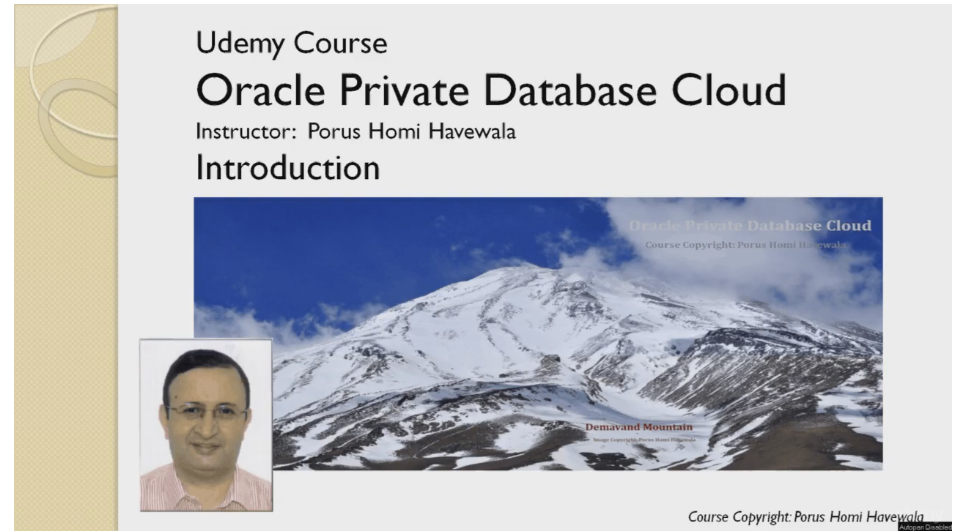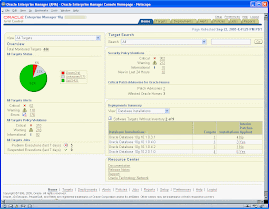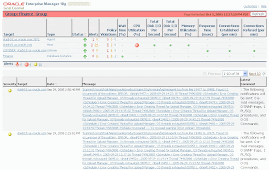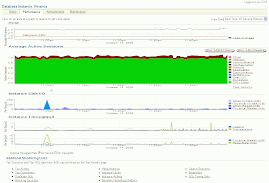By Sudip Datta on Feb 24, 2013
It has been a little more than a year, since we released our first cloud management features as a part of Oracle Enterprise Manager 12c. As customers started adopting our solution for a broad spectrum of workloads including production, QA, and development needs, we gained invaluable experience into the various use cases and requirements. Based on that experience, Oracle has released new and updated Management Plug-ins that precisely address the above requirements, ultimately leading to faster time-to-market for IT services delivery. In addition to providing enhanced cloud management support, the plug-ins extend Enterprise Manager's capabilities for Database as a Service (DBaaS) and Infrastructure as a Service (Iaas), as well as introduce new features for Testing as a Service (TaaS). See "New Plug-in Features" below for additional details.
NEW PLUG-IN FEATURES:
+ Database as a Service (DBaaS):
A sophisticated Database as a Service solution needs to cater to a variety of use cases:
• A developer or a project owner requiring a new database service with or without seed data
• QA requiring a full database refresh for intense load testing
• QA requiring to create multiple clones for functional testing on subset of data
The current release of Oracle Enterprise Manager Cloud Control 12c offers new capabilities and support for managing database cloud services in all the above cases. It comes with out-of-box capabilities such as schema-as-a-service for extreme database consolidation and database cloning through Snap Clone or RMAN Backups. These capabilities provide an optimum utilization of development and database resources, giving customers more flexibility and control in managing the database lifecycle.
While some applications need dedicated databases, small home-grown applications can often share the database instance with other applications. Schema as a Service allows DBAs to consolidate multiple applications in the same database and offer logical slices of database to the end-users such as developers, thereby preventing database sprawl. They can enforce certain performance guarantee to these services by leveraging database Resource Manager, which prevents a particular user over-consuming the underlying compute resources. End-users can therefore request schema services from the self-service application without stepping on one another. Schema as a Service significantly reduces the administrative and maintenance overhead since only a limited number of such databases need to be managed and patched.
Cloning databases got significantly easier with the new plug-in. A new feature called “Snap Clone” really makes it snappy (terabytes of data can be cloned in a matter of minutes). The feature helps clone a database by leveraging the underlying “Copy on Write” technology offered by storage technologies, such as Netapp and ZFS Storage Appliance. DBAs can set up a “test master” database by refreshing a production database and mark the “test master” as the source of functional clones. Self-service users can create multiple copies of the test-master in minutes without consuming additional space beyond what’s needed to make localized updates. This can be really beneficial for applications where the testing is primarily read-only and is limited to a subset of the data. Users can also take backups (snapshots) of their database and “time travel” across snapshots to restore the database to an earlier incarnation in a matter of minutes.
For more involved testing, such as testing production loads with lots of updates, Oracle Enterprise Manager also supports a full clone using the RMAN technology.
The following picture highlights the various use cases of DBaaS that Oracle Enterprise Manager addresses. While each of these have specific applicability, Oracle Enterprise Manager handles all these use cases comprehensively.

+ Testing as a Service (TaaS): Any enterprise application needs extensive testing before changes are rolled into production. Testing is a time-consuming process, can take weeks owing to delays in provisioning the full application stack to run the test on. QA is often left waiting on IT to provide the infrastructure and platform and sometimes this wait itself can account for 50% of the total testing cycle. Currently, no integrated solution exists that handle the provisioning and testing phases of the overall testing process leading to significant process delays and poor efficiency.
Oracle Enterprise Manager 12c introduces Testing as a Service, a new cloud platform for delivering automated application testing services. A self-service solution designed for private clouds, TaaS orchestrates the testing process end-to-end by automating provisioning of complete test labs (applications, test tools and assets comprising scripts and scenarios), execution of load and functional tests and rich application monitoring and diagnostics. It also includes a sophisticated chargeback facility and the ability to perform deeper diagnostics in context of testing.

TaaS makes it possible to significantly reduce testing time and costs without compromising quality, and enables organizations to be more agile in delivering critical business applications. One can find more details on TaaS here.
Oracle Enterprise Manager’s cloud management features are also enabled through a set of powerful RESTful APIs, which are summarized in this presentation. These APIs can be consumed from custom or 3rd party orchestration frameworks. In the new release, one can also orchestrate these APIs using an Oracle Enterprise manager provided framework called Blueprints. Using Blueprints, one can orchestrate the provisioning of a multi-layered application (such as the one shown below). One can download the documentation and sample code for the blueprints from here.

+ New Management Plug-Ins: The following new and updated plug-Ins are now available as part of this release. In addition to providing new and enhanced functionality as mentioned above, the plug-ins incorporate numerous bug fixes.
Plug-In Name / Version
*Enterprise Manager for Oracle Database (DB) 12.1.0.3 (new)
*Enterprise Manager for Oracle Virtualization (VT) 12.1.0.4 (new)
*Enterprise Manager Storage Management Framework (SMF) 12.1.0.1 (new)
*Enterprise Manager for Oracle Cloud (SSA) 12.1.0.5 (new)
Read More:
* New book: Building and Managing a Cloud Using Oracle Enterprise Manager 12c (Oracle Press)
*Cloud Management page on OTN
*Enterprise Manager 12c: Cloud Management Pack for DB Datasheet
*Enterprise Manager 12c: The Nerve Center of Oracle Cloud Technical White Paper













